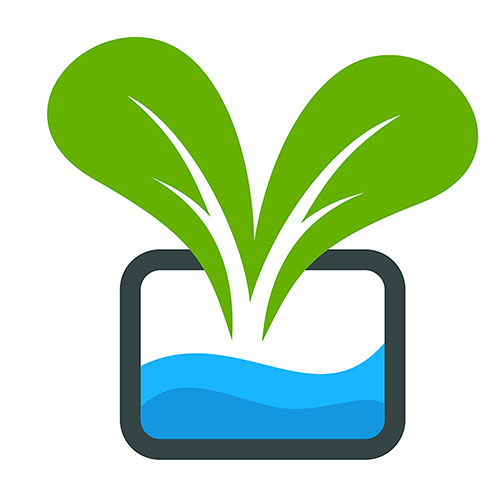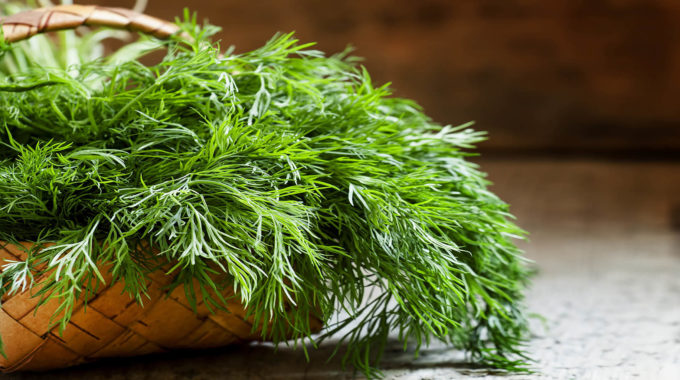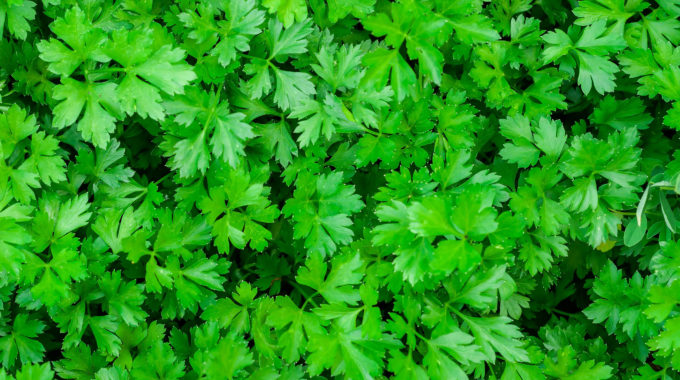Do you want to start an indoor, self-sustaining herb garden? Are you considering growing thyme…

Chives
Growing the Microgreen chives is relatively easy. In this guide, I will take you through all the steps from seed to harvest and how to grow chives!
Growers say that chives are more forgiving if you cut them down about an inch above the label.
Recommended Seeds:
- Seeds Of Change Chives – These organic Chives grow great once they germinate! Remember to be patient with the process.
- Gaea’s Blessing Seeds; Chives – With a 88% germination rate, these seeds come with 100+ to plant!
- Sow Right Seeds; Garlic Chives – Garlic Chives are one of the most popular types of Chives.
Tips & Tricks
- When you go to harvest, only cut about 1/3 of the plant to stimulate growth.
- Do not trim anything until 3 weeks for a full growth cycle.
- People will notice that as they grow, there may be a black seed on the top. Simply and gently pull those off.
- You can trim your chive plant to be a few inches shorter than a grow light.
- Growers notice that once chives begin to grow, they seem super thin. Give them time to become thicker!
- Chives, depending on the variety, can take a long time to germinate and begin growing. Give your chives a chance before replacing it with a different seed!
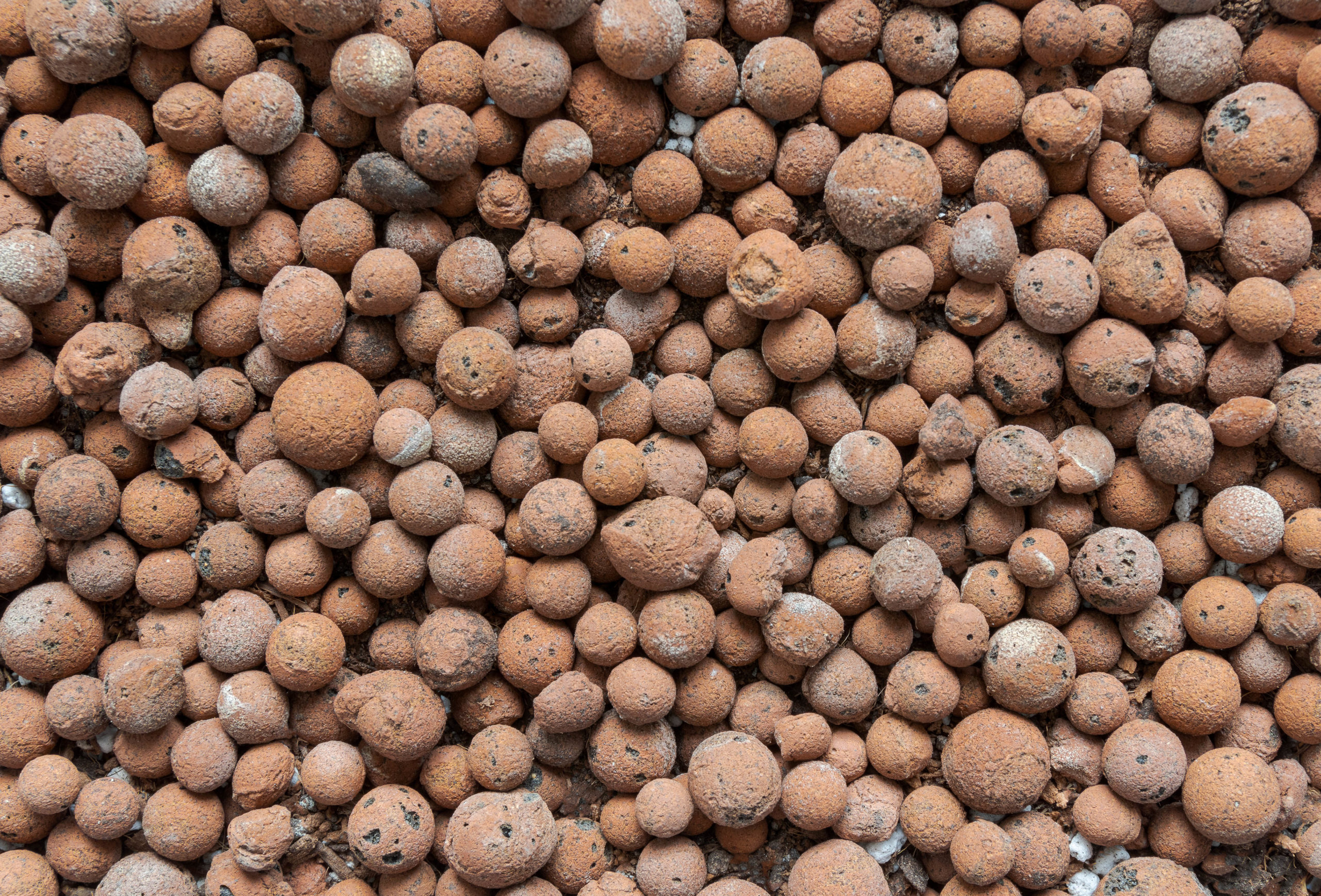
Inside Scoop
Chive growers say that after you transplant, it is about 6 – 8 weeks before the plant if fully mature; about 8 weeks until you can start harvesting regularly.
It is actually hard to give your plant too much sun, as they are a hardy plant.
When starting in your AeroGarden, keep your light on the lowest setting until they start to thrive and grow like crazy.
Growers say that chives are more forgiving if you cut them down about an inch above the label.
Recommended Seeds:
- Seeds Of Change Chives – These organic Chives grow great once they germinate! Remember to be patient with the process.
- Gaea’s Blessing Seeds; Chives – With a 88% germination rate, these seeds come with 100+ to plant!
- Sow Right Seeds; Garlic Chives – Garlic Chives are one of the most popular types of Chives.
Chive Facts
- Optimal PH: 6.1 to 6.8
- 1260 – 1540 PPM
- Temp: 65 – 80 degrees
- Enjoys: nitrogen, potassium and phosphorus and a good airflow
Grows Well With in an Aeroponic System
- Tomatoes
- Parsley
- Lettuce
- Cucumbers
Grows Well With in Soil
- Tomatoes
- Carrots
- Beets
- Rhubarb
- Strawberries
- Broccoli
- Cabbage
Grows Well With Hydroponically
- Tomatoes
- Cabbage
- Eggplant
- Peppers
- Strawberries
- Parsley
- Cilantro
- Basil
- Tarragon
Hydroponic Chives
Hydroponic Chives: Why They Are a Great Choice for Your Indoor Garden!
If you’re looking to add some fresh herbs to your indoor garden, chives might just be the perfect choice. Not only do they add a delicious oniony flavor to your dishes, but they are also incredibly easy to grow hydroponically. Here are some reasons why chives are one of the most popular herbs to be grown using hydroponics.
They Don’t Take Up Much Space
One of the biggest advantages of growing chives hydroponically is that they don’t require much space. Unlike other herbs that can quickly outgrow their pots, chives can be grown in small containers, making them perfect for indoor gardens or small balconies.
They Are Easy to Grow for Nutrient Intake
Chives are also incredibly easy to grow hydroponically because they don’t require much maintenance. They thrive in nutrient-rich water, making them perfect for hydroponic systems. You can easily monitor the pH levels and nutrient intake in the water to ensure that your chives are getting the right amount of nutrients.
They Can Be Grown with Most Herbs
Another great advantage of growing chives hydroponically is that they can be grown alongside other herbs. This means that you can create a diverse and flavorful herb garden without having to worry about space constraints. Some herbs that grow well with chives include basil, parsley, and thyme.
They Are Super Easy to Propagate
One of the best things about growing chives hydroponically is that they are super easy to propagate. All you need to do is remove a small clump of chives from your existing plant and plant it in a new container. Within a few weeks, you’ll have a new plant that’s ready to be harvested.
To begin growing this popular herb, you will need to start from seed, or by propagating an already grown plant. Germination takes about 8 – 10 days, ready to transplant to your AeroGarden around 4 -6 weeks. For the liquid nutrient, you can use the same as you would for Parsley, and Cilantro. You will want about 14 hours of light each day for the best harvest.
What people like about growing hydroponic chives is that you can harvest and keep harvesting. This herb will continue to grow and grow after each harvest. For best results, place a fan near the chives.
They will produce flowers, so you will need to pinch these off as soon as you see them to promote growth. When you go to harvest, use sharp scissors, and cut 1 – 2 inches from the base, near the water to allow the plant to continue growing.
Hydroponic Chives
Aeroponic Chives
Are you looking for a new way to grow your chives? Have you heard of aeroponics? Aeroponics is a method of growing plants without soil, using a nutrient-rich mist to provide the plants with everything they need to grow. In this article, we will explore how aeroponic chives can thrive and provide a great yield.
Chives are a great herb to grow in an aeroponic system. They have a relatively short life cycle of 60-90 days and can produce a significant yield. In fact, studies have shown that aeroponic chives can produce up to three times more than those grown in soil. This is due to the fact that the roots are exposed to a nutrient-rich mist, allowing them to absorb more nutrients and water than they would in soil.
Another benefit of growing chives in an aeroponic system is that it is a great way to learn about aeroponic gardening. Chives are relatively easy to grow and require minimal maintenance, making them a great option for beginners.
To grow chives in an aeroponic system, you will need a few key components. First, you will need an aeroponic system. This can be purchased online or at a local garden supply store. You will also need chive seeds, a nutrient solution, and a light source.
Once you have your supplies, it’s time to get started. Begin by filling the reservoir of your aeroponic system with the nutrient solution. Then, plant your chive seeds in the designated plant holders. Make sure to follow the instructions provided with your system for proper placement and spacing.
Finally, provide your chives with a light source. This can be natural sunlight or an artificial light source. Make sure to monitor the temperature and humidity levels in your growing area to ensure optimal growing conditions.
Growing chives in an aeroponic system is a great way to increase yield and learn about aeroponic gardening. With minimal maintenance and a short life cycle, chives are a great option for beginners. So why not give it a try and see how aeroponic chives can thrive in your garden?

Indoor Chives
Growing herbs indoors is a great way to enjoy fresh herbs all year round. Chives are a great herb to grow indoors, as they are easy to care for and can thrive in almost any environment. In this article, we will discuss how to grow chives indoors, whether in soil or hydroponically.
Growing Chives in Soil
If you are growing chives in soil, it is important to make sure that you have a well-draining soil. Chives do not like to be in standing water, so make sure that your pot has drainage holes. You can also add perlite or sand to your soil mix to improve drainage.
Chives grow best when watered frequently. Keep the soil moist, but not saturated. You can check the moisture level by sticking your finger in the soil. If it feels dry, it’s time to water. Chives also prefer full sun, so place them in a south-facing window or somewhere that receives at least six hours of sun a day.
Chives can be grown in a small pot, but they will also do well in a larger container. They can even be grown in a hanging basket. Chives grow quickly, so you may need to transplant them into a larger pot as they grow.
Growing Chives Hydroponically
Growing chives hydroponically is just as easy as growing them in soil. Hydroponic chives can be grown in a variety of containers, such as mason jars or plastic bottles.
To grow hydroponic chives, you will need a hydroponic system and a nutrient solution. Chives prefer a pH level of 6.5-7.5, so make sure that your nutrient solution is within this range.
Chives can be grown using either a deep water culture system or a nutrient film technique system. In a deep water culture system, the roots of the chives are submerged in the nutrient solution. In a nutrient film technique system, a thin film of nutrient solution is constantly flowing over the roots.
Chives grown hydroponically will grow faster than those grown in soil, and they will also be more flavorful. However, it is important to monitor the pH level and nutrient levels regularly to ensure that your chives are getting the nutrients they need.
Growing chives indoors is a great way to enjoy fresh herbs all year round. Whether you choose to grow them in soil or hydroponically, chives are easy to care for and can thrive in almost any environment. With proper watering, sunlight, and drainage, you can enjoy delicious chives in your favorite dishes whenever you want.
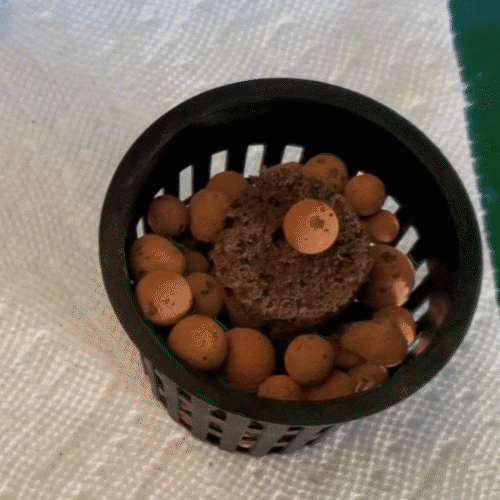
Pruning
You should be pruning back to 1 – 2 inches about the crown, about every other week. This will give your chives a nice harvest and will keep the herb looking green and lush.
Pest Control
The best thing about growing your herbs indoors is the lack of pests that will attack due to being inside. The one to keep an eye out for is Aphids. If you find these attacking your chives, knock them off right away with a heavy spray or even use an insecticidal soap.
Diseases
When growing indoors, diseases are hard to come by. Although fungal diseases are common with indoor hydroponics. This could be a cause of the water, air flow, and nutrients.
Tips & Tricks
- When you go to harvest, only cut about 1/3 of the plant to stimulate growth.
- Do not trim anything until 3 weeks for a full growth cycle.
- People will notice that as they grow, there may be a black seed on the top. Simply and gently pull those off.
- You can trim your chive plant to be a few inches shorter than a grow light.
- Growers notice that once chives begin to grow, they seem super thin. Give them time to become thicker!
- Chives, depending on the variety, can take a long time to germinate and begin growing. Give your chives a chance before replacing it with a different seed!

Inside Scoop
Chive growers say that after you transplant, it is about 6 – 8 weeks before the plant if fully mature; about 8 weeks until you can start harvesting regularly.
It is actually hard to give your plant too much sun, as they are a hardy plant.
When starting in your AeroGarden, keep your light on the lowest setting until they start to thrive and grow like crazy.
Growers say that chives are more forgiving if you cut them down about an inch above the label.
Recommended Seeds:
- Seeds Of Change Chives – These organic Chives grow great once they germinate! Remember to be patient with the process.
- Gaea’s Blessing Seeds; Chives – With a 88% germination rate, these seeds come with 100+ to plant!
- Sow Right Seeds; Garlic Chives – Garlic Chives are one of the most popular types of Chives.
Lets Get Planting Chives!
[/vc_column_text][/vc_column][/vc_row]Chive Facts
- Optimal PH: 6.1 to 6.8
- 1260 – 1540 PPM
- Temp: 65 – 80 degrees
- Enjoys: nitrogen, potassium and phosphorus and a good airflow
Grows Well With in an Aeroponic System
- Tomatoes
- Parsley
- Lettuce
- Cucumbers
Grows Well With in Soil
- Tomatoes
- Carrots
- Beets
- Rhubarb
- Strawberries
- Broccoli
- Cabbage
Grows Well With Hydroponically
- Tomatoes
- Cabbage
- Eggplant
- Peppers
- Strawberries
- Parsley
- Cilantro
- Basil
- Tarragon
Hydroponic Chives
Hydroponic Chives: Why They Are a Great Choice for Your Indoor Garden!
If you’re looking to add some fresh herbs to your indoor garden, chives might just be the perfect choice. Not only do they add a delicious oniony flavor to your dishes, but they are also incredibly easy to grow hydroponically. Here are some reasons why chives are one of the most popular herbs to be grown using hydroponics.
They Don’t Take Up Much Space
One of the biggest advantages of growing chives hydroponically is that they don’t require much space. Unlike other herbs that can quickly outgrow their pots, chives can be grown in small containers, making them perfect for indoor gardens or small balconies.
They Are Easy to Grow for Nutrient Intake
Chives are also incredibly easy to grow hydroponically because they don’t require much maintenance. They thrive in nutrient-rich water, making them perfect for hydroponic systems. You can easily monitor the pH levels and nutrient intake in the water to ensure that your chives are getting the right amount of nutrients.
They Can Be Grown with Most Herbs
Another great advantage of growing chives hydroponically is that they can be grown alongside other herbs. This means that you can create a diverse and flavorful herb garden without having to worry about space constraints. Some herbs that grow well with chives include basil, parsley, and thyme.
They Are Super Easy to Propagate
One of the best things about growing chives hydroponically is that they are super easy to propagate. All you need to do is remove a small clump of chives from your existing plant and plant it in a new container. Within a few weeks, you’ll have a new plant that’s ready to be harvested.
To begin growing this popular herb, you will need to start from seed, or by propagating an already grown plant. Germination takes about 8 – 10 days, ready to transplant to your AeroGarden around 4 -6 weeks. For the liquid nutrient, you can use the same as you would for Parsley, and Cilantro. You will want about 14 hours of light each day for the best harvest.
What people like about growing hydroponic chives is that you can harvest and keep harvesting. This herb will continue to grow and grow after each harvest. For best results, place a fan near the chives.
They will produce flowers, so you will need to pinch these off as soon as you see them to promote growth. When you go to harvest, use sharp scissors, and cut 1 – 2 inches from the base, near the water to allow the plant to continue growing.
Hydroponic Chives
Aeroponic Chives
Are you looking for a new way to grow your chives? Have you heard of aeroponics? Aeroponics is a method of growing plants without soil, using a nutrient-rich mist to provide the plants with everything they need to grow. In this article, we will explore how aeroponic chives can thrive and provide a great yield.
Chives are a great herb to grow in an aeroponic system. They have a relatively short life cycle of 60-90 days and can produce a significant yield. In fact, studies have shown that aeroponic chives can produce up to three times more than those grown in soil. This is due to the fact that the roots are exposed to a nutrient-rich mist, allowing them to absorb more nutrients and water than they would in soil.
Another benefit of growing chives in an aeroponic system is that it is a great way to learn about aeroponic gardening. Chives are relatively easy to grow and require minimal maintenance, making them a great option for beginners.
To grow chives in an aeroponic system, you will need a few key components. First, you will need an aeroponic system. This can be purchased online or at a local garden supply store. You will also need chive seeds, a nutrient solution, and a light source.
Once you have your supplies, it’s time to get started. Begin by filling the reservoir of your aeroponic system with the nutrient solution. Then, plant your chive seeds in the designated plant holders. Make sure to follow the instructions provided with your system for proper placement and spacing.
Finally, provide your chives with a light source. This can be natural sunlight or an artificial light source. Make sure to monitor the temperature and humidity levels in your growing area to ensure optimal growing conditions.
Growing chives in an aeroponic system is a great way to increase yield and learn about aeroponic gardening. With minimal maintenance and a short life cycle, chives are a great option for beginners. So why not give it a try and see how aeroponic chives can thrive in your garden?

Indoor Chives
Growing herbs indoors is a great way to enjoy fresh herbs all year round. Chives are a great herb to grow indoors, as they are easy to care for and can thrive in almost any environment. In this article, we will discuss how to grow chives indoors, whether in soil or hydroponically.
Growing Chives in Soil
If you are growing chives in soil, it is important to make sure that you have a well-draining soil. Chives do not like to be in standing water, so make sure that your pot has drainage holes. You can also add perlite or sand to your soil mix to improve drainage.
Chives grow best when watered frequently. Keep the soil moist, but not saturated. You can check the moisture level by sticking your finger in the soil. If it feels dry, it’s time to water. Chives also prefer full sun, so place them in a south-facing window or somewhere that receives at least six hours of sun a day.
Chives can be grown in a small pot, but they will also do well in a larger container. They can even be grown in a hanging basket. Chives grow quickly, so you may need to transplant them into a larger pot as they grow.
Growing Chives Hydroponically
Growing chives hydroponically is just as easy as growing them in soil. Hydroponic chives can be grown in a variety of containers, such as mason jars or plastic bottles.
To grow hydroponic chives, you will need a hydroponic system and a nutrient solution. Chives prefer a pH level of 6.5-7.5, so make sure that your nutrient solution is within this range.
Chives can be grown using either a deep water culture system or a nutrient film technique system. In a deep water culture system, the roots of the chives are submerged in the nutrient solution. In a nutrient film technique system, a thin film of nutrient solution is constantly flowing over the roots.
Chives grown hydroponically will grow faster than those grown in soil, and they will also be more flavorful. However, it is important to monitor the pH level and nutrient levels regularly to ensure that your chives are getting the nutrients they need.
Growing chives indoors is a great way to enjoy fresh herbs all year round. Whether you choose to grow them in soil or hydroponically, chives are easy to care for and can thrive in almost any environment. With proper watering, sunlight, and drainage, you can enjoy delicious chives in your favorite dishes whenever you want.

Pruning
You should be pruning back to 1 – 2 inches about the crown, about every other week. This will give your chives a nice harvest and will keep the herb looking green and lush.
Pest Control
The best thing about growing your herbs indoors is the lack of pests that will attack due to being inside. The one to keep an eye out for is Aphids. If you find these attacking your chives, knock them off right away with a heavy spray or even use an insecticidal soap.
Diseases
When growing indoors, diseases are hard to come by. Although fungal diseases are common with indoor hydroponics. This could be a cause of the water, air flow, and nutrients.
Tips & Tricks
- When you go to harvest, only cut about 1/3 of the plant to stimulate growth.
- Do not trim anything until 3 weeks for a full growth cycle.
- People will notice that as they grow, there may be a black seed on the top. Simply and gently pull those off.
- You can trim your chive plant to be a few inches shorter than a grow light.
- Growers notice that once chives begin to grow, they seem super thin. Give them time to become thicker!
- Chives, depending on the variety, can take a long time to germinate and begin growing. Give your chives a chance before replacing it with a different seed!

Inside Scoop
Chive growers say that after you transplant, it is about 6 – 8 weeks before the plant if fully mature; about 8 weeks until you can start harvesting regularly.
It is actually hard to give your plant too much sun, as they are a hardy plant.
When starting in your AeroGarden, keep your light on the lowest setting until they start to thrive and grow like crazy.
Growers say that chives are more forgiving if you cut them down about an inch above the label.
Recommended Seeds:
- Seeds Of Change Chives – These organic Chives grow great once they germinate! Remember to be patient with the process.
- Gaea’s Blessing Seeds; Chives – With a 88% germination rate, these seeds come with 100+ to plant!
- Sow Right Seeds; Garlic Chives – Garlic Chives are one of the most popular types of Chives.
